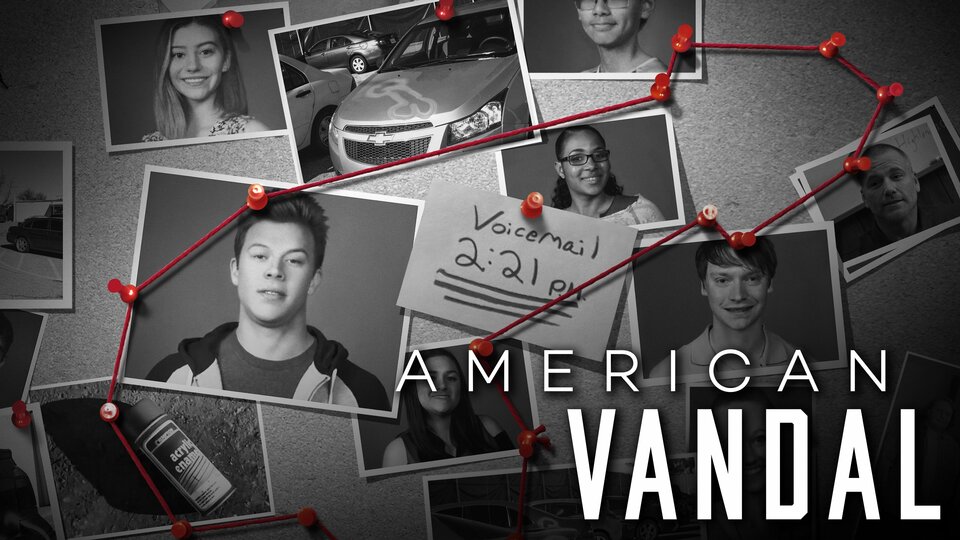Engaging the Audience and Communicating Key Concerns
Our project, “Situation Tragedy,” was showcased at the ‘AndScene Festival’ under the studio theme ‘Beyond a Joke.’ Our aim was to engage the audience by merging humour with a critical look at the television industry’s behind-the-scenes chaos. The incident of a condom being found in a sandwich, while weird and comedic, served as a vehicle to explore deeper issues such as workplace sabotage and the duality between actors’ public and private personas. We wanted the audience to laugh at the mess of interpersonal relationships we created..
The mockumentary style, inspired by “American Vandal,” was chosen to make the absurdity relatable and to offer a satirical commentary on the entertainment world. By doing so, we hoped to communicate a key concern of the studio: the power of comedy to reveal truths and provoke thought. The table read during the exhibition, where we heard laughter and saw reactions firsthand, confirmed that our comedic elements resonated with the audience, effectively communicating our intended message.
Future Possible Improvements
If given the opportunity to further develop “Situation Tragedy” for another festival or as a series, several core elements would be refined and extended. Firstly, character development, particularly of Mira, our superfan detective, would be deepened. Adding layers to her background and more vividly showcasing her media literacy and obsession would create a more 3 dimensional character for the audience to follow.
Another improvement would be for Arthur, the method actor, needed more of his method acting shown. Highlighting his dedication to method acting in more scenes could increase the humour and make his character more memorable. This could involve additional absurd scenarios that showcase his commitment to his craft in a humorous light.
Insights from Other Projects
Reflecting on the work of other groups within our studio provided valuable insights. “Operation Superstar” offered an intriguing exploration of parody and satire in comedy. Their project adeptly used parody to critique celebrity culture, highlighting how exaggerated personas and public images often mask deeper issues. This aligns with our studio’s exploration of how comedy can uncover hidden truths. Their use of satire was sharp and effective, making the audience laugh while also encouraging them to reflect on the absurdities of fame and media representation.
Another notable project, “Milk Run,” provided insights into situational comedy. This project excelled in creating humour from everyday scenarios, emphasising the importance of context in generating laughs. The mundane task of running errands became a series of comedic misadventures, showcasing how ordinary situations can be ground for comedy. This reinforced the idea that humour often arises from relatable, everyday experiences, a concept we also tried to capture in our project.
Reflections on Another Studio’s Work
Engaging with the work from the Instincts Studio, ‘Decadence’, particularly the short film about a muse and her artist, highlighted that distinction of the muse-artist relationship and the obsession inherent in the creative process. The film effectively blurred the lines between art and reality, showing how the muse’s obsession with both the artist and the art itself can lead to a loss of self. One particularly striking example was the scene where the artist trashed the room after the muse went on a date. This communicated the key idea that art is not just a reflection of reality but can consume and transform the creator and the subject.
This exploration of obsession and identity in “Decadence” resonates with themes of our own work, where the characters’ public personas often overshadow their true selves. It provided a compelling look at how art and life intertwine, sometimes with destructive consequences, adding a layer of depth to the understanding of the creative process.
Conclusion
The ‘AndScene Festival’ was an enriching experience that not only allowed us to showcase “situation tragedy” but also to engage with and learn from the works of other students. Our project successfully used humour to address deeper issues within the entertainment industry, and the feedback received has highlighted areas for future development. By reflecting on the insights gained from other projects within our studio and beyond, I have gained a broader understanding of how comedy can be used to reveal truths and provoke thought, reaffirming the power of humour as a tool for critical engagement. It was also fulfilling to see an audience’s reaction to our work and the laughter it sparked.



